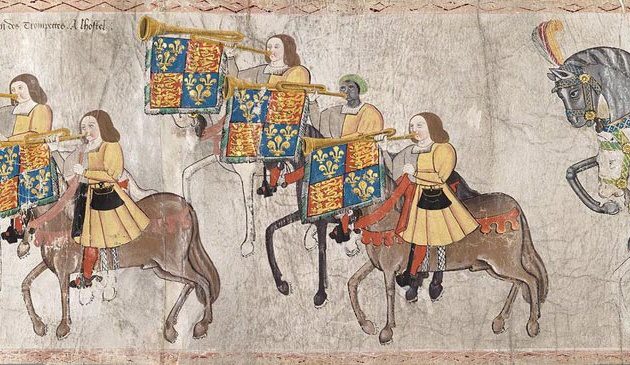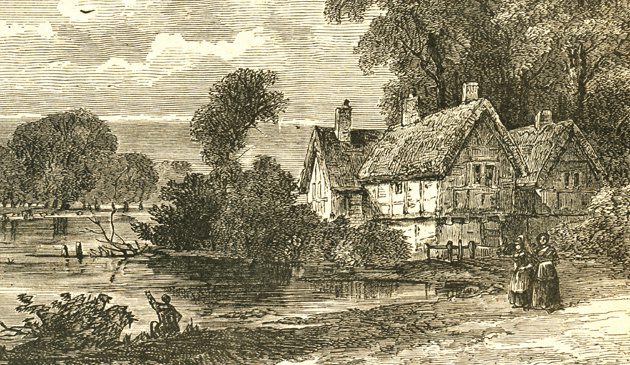St. James’s Park – from leper hospital to royal park

St. James’s Park in about 1680, looking east towards the royal residence of Whitehall Palace. The palace’s Banqueting House, designed by Inigo Jones and completed in 1622, can be seen in the distance. The large building to the far right is Westminster Abbey. On the right foreground of this picture is the long canal lined with double rows of trees, created for Charles II.
The ball and mallet game of pelle melle was introduced from France, an early form of croquet. It was played along the track, which gave the street the corrupted name of Pall Mall. As coaches increasingly used the track, throwing up dust as they went, Charles had a 600-yard parallel track known simply as the Mall laid out inside the northern edge of the park. It was kept smooth and clean by laying down crushed shells. The Mall was a fashionable place to stroll and parade the latest fashions during the reigns of Charles, James II, Queen Anne, George I and George II. One of those who promenaded on the Mall claimed that “5000 of the most lovely women in this country of female beauty, all splendidly attired, and accompanied by as many well-dressed men” could daily be seen there. Birdcage Walk was laid out along the southern edge of the park.
Charles liked to take walks during the mornings and evenings along the Mall and to Hyde Park accompanied by his advisors, courtiers, several Yeomen of the Guard, and spaniels. His exercise perhaps provided the name of Constitution Hill that today runs west from St. James’s Park along the southern edge of what is now Green Park. His brother James protested that, for his safety, the King should spend less time in the park surrounded by people. Charles’s reply was that no-one would want to kill him because that would put James on the throne!
What we now know as Green Park was, until the 17th century, a rural area that lay between the royal lands of St. James’s Park and Hyde Park. It was then meadows, partly swampy, with wild flowers and sheep tracks. The earliest record of those meadows is from 1554 in the reign of Queen Mary.
There were worries, particularly amongst Protestants, when it became clear that she planned to marry King Philip of Spain, effectively putting England under the control of Catholic Spain. A rebellion was led by Sir Thomas Wyatt who advanced on London with an army of 4,000 men while Mary took refuge in St. James’s Palace. The Earl of Pembroke massed a defensive force that stretched from the future park to Charing Cross. Wyatt’s rebels were subsequently defeated at Ludgate.
In the 17th century the meadows of the future Green Park were part of the estate of the Poulteney family and known as Sandpit Field. Charles II wished to walk between his home at Whitehall Palace to Hyde Park without leaving royal land, so in 1668 the space between Hyde Park and St. James’s Fields was surrendered to him. He had it enclosed by a brick wall with a ranger’s house, stocked it with deer, and it became known as Upper St. James’s Park. Trees were planted and gravel paths laid down. Charles had an icehouse built, one of the first in Britain and a great novelty at the time. It supplied him and his guests with ice for cooling drinks and a small surviving mount can still be seen where it stood, opposite 119 Piccadilly. During his reign houses began to be erected along the edges of Upper St. James’s Park and on the northern side of Portugal Street.
Portugal Street, named after the Portuguese wife of Charles II, marked the northern boundary of Upper St. James’s Park. In past times it was known as the Exeter Road, the route from London to the south-west. It takes its modern name of Piccadilly from Pikadilly Hall, built by Robert Hall from the fortune he earned producing piccadill collars.
The main royal residence remained at Whitehall on the eastern side of St. James’s Park from the time of Henry VIII until James II. William III suffered from asthma so he and Queen Anne moved to a new royal palace at Kensington, to the west of Hyde Park. William had an observation post built on Duck Island in St. James’s Park where he could withdraw to smoke his pipe and watch the waterfowl. A regulation was passed:
His Majesty’s special command that none presume to keep a fowling piece, gun, setting dog, net, trammel, or other unlawful engine, whereby to destroy, or kill, or in any way disturb the game.
In January 1698 Whitehall Palace was largely destroyed by fire. Thereafter the official business of the royal court moved to St. James’s Palace, which remains the case today even though it has rarely been the residence of the monarchs. Foreign ambassadors and high commissioners to the United Kingdom are still accredited to the Court of St James’s.
Sources include: Neville Braybrooke ‘London Green’ (1959); Alicia Amherst ‘London’s Parks and Gardens’ (1907); John Martin Robinson ‘Buckingham Palace’; Edward Walford ‘Old & New London’ (1897); ‘The Wellington Arch and The Marble Arch’ English Heritage; David Sullivan ‘The Westminster Circle’; Susan Foreman ‘From Palace to Power’; ‘The Diary of Samuel Pepys’; Edgar Sheppard ‘The Old Royal Palace of Whitehall’ (1902); Lisa Picard ‘Restoration London’; David Coke and Alan Borg ‘Vauxhall Gardens – A History’.


